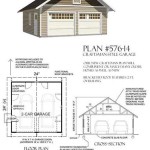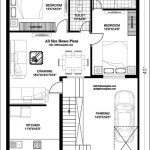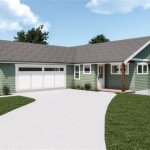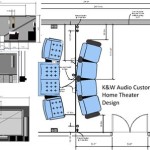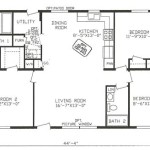Barndominium Floor Plans: Exploring the 2-Story Option
Barndominiums, a portmanteau of "barn" and "condominium," represent a compelling alternative to traditional housing. These structures blend the spaciousness and durability of agricultural buildings with the comfort and amenities of modern homes. While single-story barndominiums enjoy considerable popularity, the two-story configuration offers significant advantages in terms of space utilization, design flexibility, and aesthetic appeal. This article explores the key aspects of two-story barndominium floor plans, examining their benefits, design considerations, and potential challenges.
The fundamental allure of the barndominium lies in its inherent cost-effectiveness, particularly when compared to conventional construction methods. Using pre-engineered metal building (PEMB) kits or repurposed agricultural structures significantly reduces material and labor expenses. Two-story designs leverage this cost advantage by maximizing the usable floor area within a given footprint. This approach is particularly beneficial for those seeking substantial living space on a smaller property, making it a viable option in areas with high land costs or zoning restrictions.
Unlike typical homes framed with wood, barndominiums employ steel framing, offering superior structural integrity and resistance to environmental factors such as fire, wind, and pests. This inherent durability translates into lower long-term maintenance costs and increased property value. The two-story barndominium builds upon this strength, creating a robust and enduring living space designed to withstand the rigors of time.
Space Optimization and Design Flexibility
One of the primary drivers behind choosing a two-story barndominium floor plan is the efficient use of space. Building vertically allows homeowners to double the living area without expanding the building's footprint. This is particularly advantageous for those with limited acreage or specific setback requirements. By stacking living spaces, the design can accommodate larger families, home offices, recreational areas, and specialized workshops without compromising outdoor space.
The open-concept design, a hallmark of many barndominiums, is readily adaptable to two-story layouts. The ground floor often serves as a large, multi-functional area combining living, dining, and kitchen spaces. This expansive layout is ideal for entertaining and fostering a sense of connection among family members. Strategically placed windows and doors can maximize natural light and create seamless transitions to outdoor living areas like patios and decks.
The upper story typically houses bedrooms, bathrooms, and potentially a secondary living area or media room. Separating these spaces from the main living area below enhances privacy and creates distinct zones for relaxation and rest. The vertical separation also allows for better noise control, a crucial consideration for families with varying schedules and activities. The flexibility of the two-story design extends to the exterior as well, allowing for various architectural styles, from traditional barn aesthetics to more contemporary and modern designs.
The interior design possibilities are vast. A popular choice is to incorporate a grand staircase as a central architectural element, adding visual interest and a touch of elegance. Loft spaces overlooking the ground floor can create a sense of openness and connection between the two levels. High ceilings, often a feature of barndominiums, can be further accentuated in a two-story design, enhancing the feeling of spaciousness and grandeur. The implementation of a second-story balcony or deck can significantly enhance the outdoor living experience, offering elevated views and a private retreat.
Structural Considerations and Construction Details
Constructing a two-story barndominium requires careful planning and adherence to established building codes and engineering principles. The structural integrity of the steel frame is paramount, and the design must account for the increased load imposed by the second story. Consulting with a qualified structural engineer is essential to ensure that the foundation and frame are adequately sized and reinforced to support the additional weight and withstand wind and seismic forces.
The choice of flooring materials for the second story is a crucial consideration. Weight is a significant factor, so lighter materials such as engineered hardwood or laminate flooring are often preferred over heavier options like concrete. Sound insulation is also important, particularly in areas directly above the main living space. Installing soundproofing underlayment beneath the flooring can significantly reduce noise transmission between floors.
Staircase design and placement are critical aspects of the two-story layout. The staircase must be designed to meet safety standards, including appropriate riser height, tread depth, and handrail requirements. The location of the staircase should be carefully considered to minimize its impact on the overall floor plan and ensure easy access between floors. Spiral staircases can save space but may not be suitable for all users, especially those with mobility issues. Straight or L-shaped staircases are generally more accessible and easier to navigate.
Insulation is another vital consideration, particularly in a two-story structure. Proper insulation reduces energy consumption and maintains a comfortable indoor climate. Spray foam insulation is a popular choice for barndominiums due to its excellent thermal performance and ability to seal air leaks. Adequate insulation of walls, ceilings, and floors is crucial for minimizing heat loss in the winter and heat gain in the summer.
The design must also account for the routing of electrical wiring, plumbing, and HVAC systems. Careful planning is essential to ensure that these systems are efficiently integrated into the structure and easily accessible for maintenance and repairs. Vertical chases or shafts should be incorporated into the design to facilitate the routing of pipes and wires between floors.
Cost Factors and Budgeting Considerations
While barndominiums generally offer a cost-effective alternative to conventional housing, the addition of a second story will naturally impact the overall project budget. The increased material requirements for the frame, flooring, and interior finishes will contribute to higher costs. Labor expenses will also increase due to the added complexity of the construction process.
The foundation requirements for a two-story structure are typically more substantial than those for a single-story building. The increased load necessitates a more robust foundation design, which may involve deeper footings or a thicker concrete slab. Site preparation costs may also be higher if extensive grading or excavation is required to ensure a level building site.
Interior finishes can significantly impact the cost of a two-story barndominium. The choice of flooring, cabinetry, countertops, and lighting fixtures will all contribute to the overall budget. Selecting affordable yet durable materials can help to control costs without sacrificing quality. Consider prioritizing essential features and deferring less critical upgrades to a later phase.
Permitting fees and inspection costs are another factor to consider. Building permits are required for most construction projects, and the fees can vary depending on the location and scope of the work. Inspections are typically required at various stages of the construction process to ensure compliance with building codes. These costs should be factored into the overall project budget.
Professional fees for architects, engineers, and contractors should also be considered. Hiring qualified professionals is essential to ensure that the project is properly designed and constructed. While professional fees can add to the upfront cost, they can also help to avoid costly mistakes and ensure that the project is completed on time and within budget.
Financing options for barndominiums may differ from those for traditional homes. Some lenders may be unfamiliar with barndominiums and may require additional documentation or a higher down payment. It is essential to shop around for the best financing terms and to work with a lender who is experienced in financing barndominium construction.
Insurance costs for barndominiums may also vary depending on the location, construction materials, and coverage options. Working with an insurance agent who is familiar with barndominiums is crucial to ensure that the property is adequately insured against potential risks such as fire, wind, and theft.
A detailed and realistic budget is essential for successfully completing a two-story barndominium project. Carefully estimate all costs, including materials, labor, permits, fees, and financing expenses. Contingency funds should be allocated to cover unexpected expenses or delays. Regularly tracking expenses and comparing them to the budget can help to ensure that the project stays on track.

2 Story Barndominium House Plan

The Best 5 Bedroom Barndominium Floor Plans Loft Pole Barn House

Amazing Two Story Barndominium Floor Plans

The New Guide To Barndominium Floor Plans Houseplans Blog Com

Two Story Barndominium Plan

Two Story Barndominium House Plans Country Home

2 Story Barndominium Plan Pole Barn House Plans Farmhouse Floor Home Design

Discover Why Farmhouse Barndominium Plans Are All The Rage Blog Eplans Com
.png?strip=all)
5 Floor Plans For Your Barndominium Home Nation

The New Guide To Barndominium Floor Plans Houseplans Blog Com

